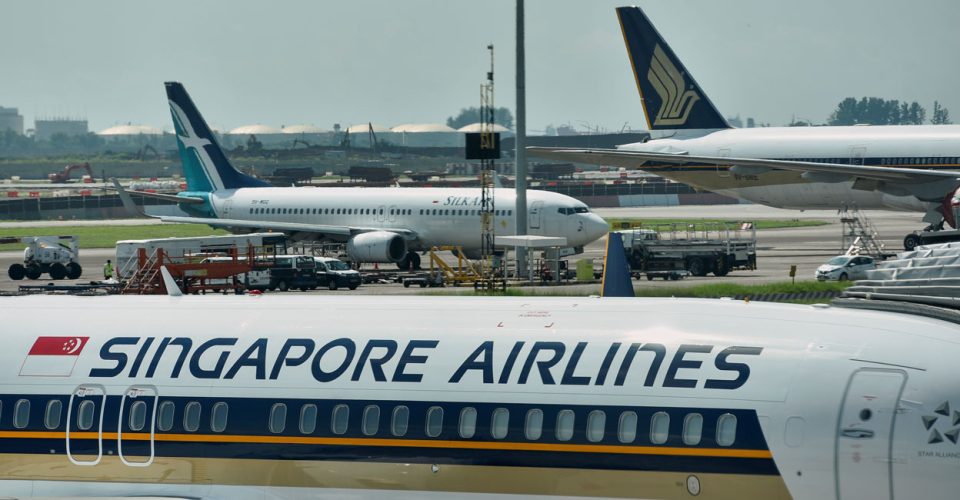The SIA deal with Tata Sons (Tata) will inject S$360 million ($267 million) into Air India. SIA will take a 25.1% stake in the enlarged Air India Group after Tata acquired it and merged with Vistara Airlines.
SIA’s deal with Tata & Sons to inject a further $267 million into Air India in November 2022 is one of the key strategic moves for future growth mentioned in the quarterly financial report. The agreement is still subject to regulatory approval.
SIA said, “Compared to Vistara, the combined entity will be four to five times larger and have a strong presence in all major Indian airline segments. The proposed merger will strengthen SIA’s presence in India, strengthening its multiple hub strategy and enabling it to continue participating directly in this large and rapidly growing aviation market.”
The airline further stated: “Deeper collaboration with like-minded airlines is an integral part of the SIA Group’s partnership strategy. This enables SIA and its partners to bring more traffic to their hubs, providing customers more choices and expanding the group’s global footprint.”
Last week, Singapore Airlines (SIA) announced a net profit of S$628 million ($465 million) for the third quarter that ended December, bringing its year-to-date profit to S$1,555 billion ($1,152 billion) — the highest revenue for an airline in a quarter and the first nine months of a fiscal year.
This is due to “strong demand for air travel continuing into the third quarter of the 2022/23 financial year, building on the momentum that started after Singapore eased border restrictions in April 2022,” the airline said in a statement. SIA Finance The year begins in April.
Singapore announced it would ease all remaining Covid restrictions for travellers and locals from February 13. Travellers not fully vaccinated against COVID-19 will no longer need proof of a negative pre-departure test before entering Singapore. They will also need travel insurance to cover COVID-19 treatment if they become ill on the island. Those vaccinated will no longer need to show proof on arrival. From the same day, using face masks on public transport will no longer be mandatory, a local last Covid-era protocol.
Singapore was one of the first Asian countries to reopen after the Covid pandemic, and its national airline has helped its tourism industry. In addition to government grants to affected industries during the Covid period, the airline also benefited from the confidence of its shareholders and financial institutions in its business as it managed to raise S$22.4 billion ($16.6 billion) during the Covid period, including S$15 billion from shareholders (the largest shareholder, which is state investment company Temasek Holdings) through the sale of shares and convertible bonds. It still holds a cash balance of S$15.4 billion as of December 2022.
That allows it to keep most of its staff and fleet and quickly resume routes when travel resumes, unlike other regional airlines, which have had to lay off workers and sell planes to stay afloat. SIA reported that its group passenger traffic would reach 80% of pre-pandemic levels by December 2022, above the Asia-Pacific region average of 51%.
Its two leading airline brands carried 7.4 million passengers in the third quarter, up 17% from the second quarter. Combined with the previous two quarters, the SIA Group served 18.8 million passengers in the first nine months of the financial year. That’s a ninefold increase from a year ago (2021) when most of the world’s borders remained closed.
Group load factor improved by 0.8 percentage points to 87.4%, the highest score for any quarter, as premium carrier SIA (87.3%) and low-cost carrier Scoot (87.8%) recorded record load factors.
Singapore Airlines reported that its cargo performance slowed from the previous quarter due to weak demand and increased belly capacity as more passenger planes returned to service worldwide. Despite the quarter-on-quarter decline, yields are still nearly double their pre-pandemic levels.
Overall, SIA’s revenue for the three months to December rose S$358 million ($265 million), or 8% from the previous month, to S$4.846 billion ($3.589 billion), a record high.
Passenger revenue rose 14% or S$463 million to S$3,767 million, as a 12.2% increase in passenger traffic for the quarter outpaced an 11.1% increase in capacity. Revenue per available seat kilometre (RASK) was 10.6 Singapore cents, the highest quarterly RASK in the group’s history.
Cargo revenue fell 14.1% or S$141 million ($104 million) to S$862 million ($638 million), as lower yields fell 14.6%, partly offset by a modest 0.6% rise in cargo carried.
Expenses rose 7.4% or S$281 million ($208 million) quarter-on-quarter to S$4,091 million ($3,030 million). This included a S$371 million (15.5%) increase in non-fuel expenses, partially offset by a S$90 million (-6.3%) decrease in net fuel costs.
Non-fuel expenses rose faster than capacity growth, mainly due to increased foreign exchange losses of S$194 million ($144 million) due to the 6.1% depreciation of the US dollar against the Singapore dollar at the end of the quarter. Net fuel costs fell to S$1,333 million ($987 million), mainly due to a 13% drop in fuel prices. Higher volumes (+$103 million) and lower fuel hedge gains (+$19 million) partially offset this.




